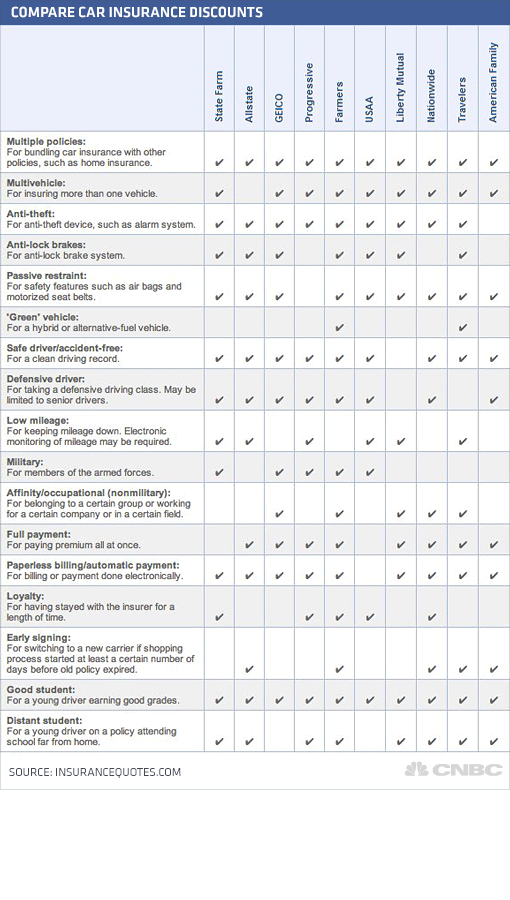
Teen Drivers Nearly Double Car Insurance Premiums
Adding a teenage driver to the family car insurance policy can double annual premiums, according to a new study—a costly fact of life that reflects the higher risk for younger drivers.
Studies show that drivers under the age of 20 are three times more likely to be involved in a fatal crash, according to the Insurance Institute for Highway Safety. And recent data finds the death rate actually increasing after a decade of decline.
Male teens are likely to pay a higher penalty premium than females, but rates also vary depending upon where you live. A teen driver will boost the family car insurance premium by an average of 116 percent in Arkansas, but just 18 percent in Hawaii.
But parents and teens can take steps to reduce the likelihood of tickets and accidents and, in the process, lower insurance costs. These range from taking a defensive driving course to ensuring the young motorist drives a car with such safety features as anti-lock brakes.

“Savvy consumers don’t settle for average,” said Laura Adams, senior insurance analyst for InsuranceQuotes.com, which conducted the study of premium charged by 10 different insurance companies. “You’re not going to move to a new state just because car insurance is cheaper somewhere else, but there are some easy things that you can do to save money regardless of where you live.”
Insurance companies generally work in a variety of factors when determining premiums, including geography, local driving conditions, a motorist’s driving record, historical data for a specific age group and gender, along with state insurance regulations. (Hawaii’s unusually low premium for teens reflects state guidelines that ban an insurer from considering factors like length of experience behind the wheel, age and gender.)
It’s that lack of experience—and perhaps hormones—that tend to translate into trouble for drivers between 16 and 19. They have a tendency to rack up more tickets, get involved in more collision, and experience a higher fatality rate than older motorists. Earlier this year, the Governors Highway Safety Association reported that deaths among 16- and 17-year-old drivers surged a combined 19 percent during the first half of 2012, significantly faster than for the general population of motorists.
As a result, teen drivers are socked with higher premiums than any other group, even when rolled into a family insurance policy. On average, the InsuranceQuotes survey of 10 insurers found that the average annual premium will rise 84 percent when a teen driver is added, roughly a $2,000 penalty. But the precise figure will vary depending upon age, gender and geography.
A 16-year-old will cause the typical premium to go up 99 percent, a figure that dips to 90 percent for a 17-year-old, 82 percent for a driver aged 18, and 65 percent for someone aged 19.
The average male teen driver will sock the family with a 96 percent increase in car insurance premiums while females cause premiums to rise a more modest 72 percent.
The survey found that premiums will, on average, more than double in 10 states, from Arkansas’ 116 percent jump to the 101 percent increase in New Hampshire and Louisiana.
Hawaii, at 18 percent, has the lowest teen premium penalty, followed by North Carolina, at 59 percent, and New York, at 62 percent.
The study assumes all members of the family have clean driving records and good credit. A couple tickets or an at-fault accident can boost premiums by thousands of dollars. It also assumes the family operates two relatively safe vehicles, such as a Toyota Prius, a Honda Civic or, at the other end of the size spectrum, a Ford F-150 pickup.
A separate study by CarInsurance.com recently revealed just how much more young motorists might pay depending on the vehicles they drive. The premium for a 2008 Ford Taurus owned and operated by a teen driver might come in at $3,322 a year, on average. A Mitsubishi Lancer GTS, still one of the more affordable vehicles to insure, has a typical annual premium of $4,392. Luxury or high-performance models can boost that by thousands each year.
As for bringing down insurance costs, discounts vary from one company to the next, though most offer discounts for a teen taking a defensive driving cost, and for families insuring multiple vehicles. All 10 of the companies surveyed give lower rates to good students and to families that carry multiple insurance policies with the same carrier.
(By CNBC Contributor Paul Eisenstein)
